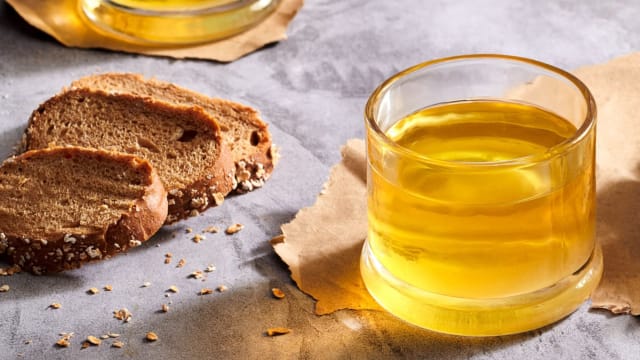
Homemade Dahi & Yogurt

Homemade Dahi & Yogurt
Description
This simple homemade yogurt recipe transforms just two ingredients—milk and a spoonful of active yogurt—into a creamy, probiotic-rich staple. A touch of raw honey adds subtle sweetness and extra prebiotic benefits. Whether using Indian dahi or Greek yogurt as a starter, this method yields a fresh, nutritious yogurt that supports digestion, gut health, and overall wellbeing.
NOTE
Equipment: Ceramic bowl with cover (6 quart/ 500 ml capacity)
Ingredients
just over 2 cups (500g) dahi or yogurt MAKES
- 1 pint (500 ml) milk ( preferably full-fat/whole milk)
- 2 tbsp active Indian dahi or Greek yogurt
- 1 tsp raw, local honey (optional)
Directions
-
Step 1
Reserving ½ a cup (125ml) of milk, heat the remaining milk until it comes to a boil, about 180°F (80°C). As soon as it begins to bubble, let it simmer for about a minute, then switch off the heat. -
Step 2
Let the milk cool to about 98°F (37°C). An easy way to check this is to use your body temperature as a gauge: the milk should be slightly warm to the touch, not hot. -
Step 3
You can optionally warm your bowl in a microwave for 30 seconds, or in an oven for about 1 minute. Make sure it isn’t hot though, just warm to the touch. -
Step 4
Pour the reserved room temperature milk into the bowl. Add in the yogurt culture — dahi or Greek yogurt, depending on which one you’re making. Whisk it gently but thoroughly to ensure it evenly inoculates the milk. -
Step 5
To subtly sweeten your yogurt, whisk in raw honey if using. You’ll also get the benefits of the probiotics in honey added to those in your yogurt. -
Step 6
Add the remaining warmed milk to the bowl, stir well, and cover with a lid. Store in a warm place to set. You can wrap the bowl with a warm towel to maintain optimum temperature, or keep it in an oven with the light on. Depending on the season and temperature, dahi will take around 6 to 10 hours; yogurt should take around 5 to 8 hours. To check if it is set, gently tilt the bowl, the curd should jiggle but not flow. To get a firm, thick set, refrigerate the bowl for an additional 4 hours, and ideally overnight.
About the author
More by Moina Oberoi

Ayurveda Rasas
Learn to cook with the six rasas of Ayurveda through five simple recipes.

Beet Millet Pulao
Sweet doesn’t always mean dessert! In Ayurveda, the madhura rasa (sweet taste) is associated with energy-giving foods, like this millet pulao recipe from Moina Oberoi.

Candy Cane Beet & Carrot Kanji
Kanji is a refreshing, hydrating, probiotic Indian drink, packed with the goodness of carrot and beet. The most important ingredient is the winter sunlight!




